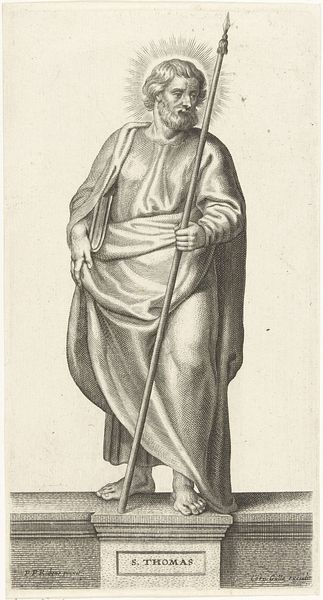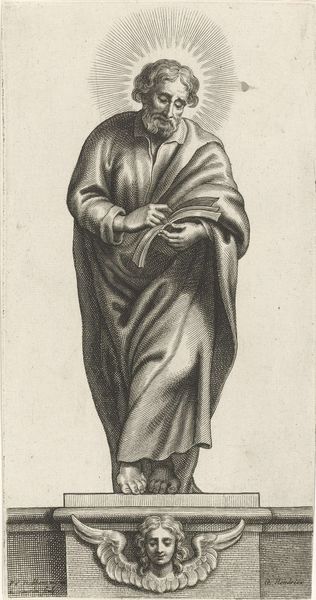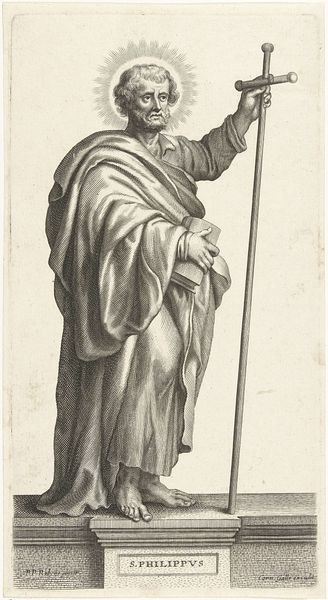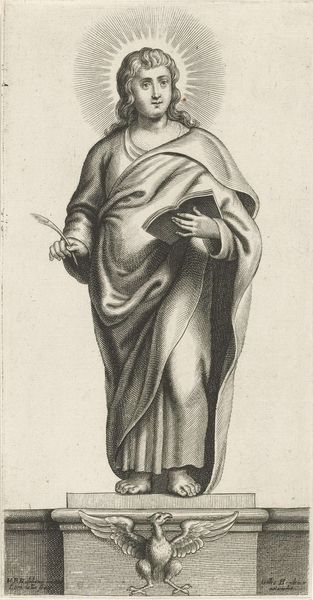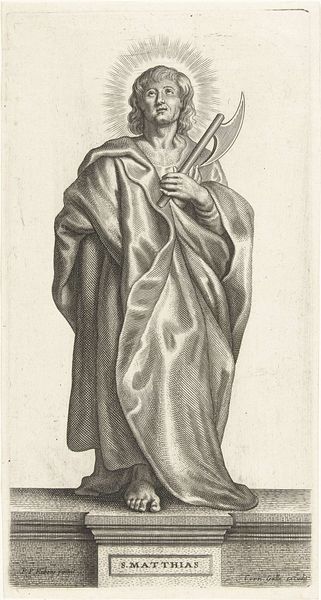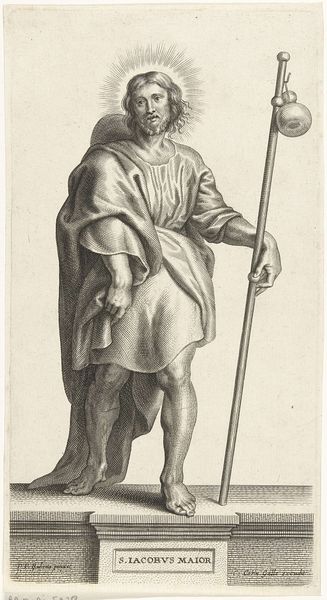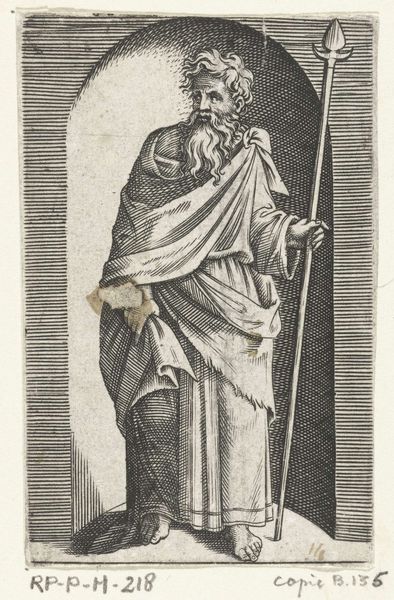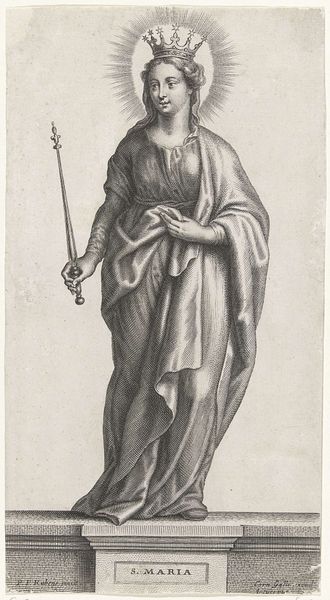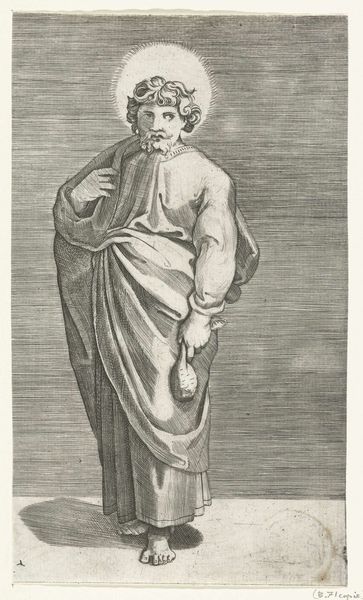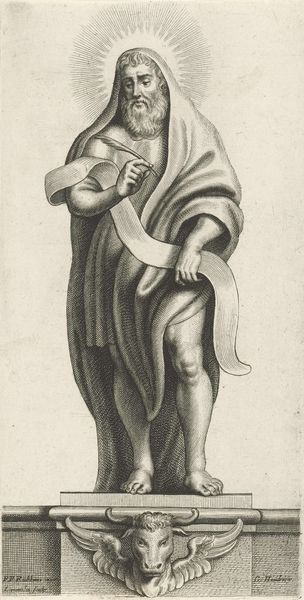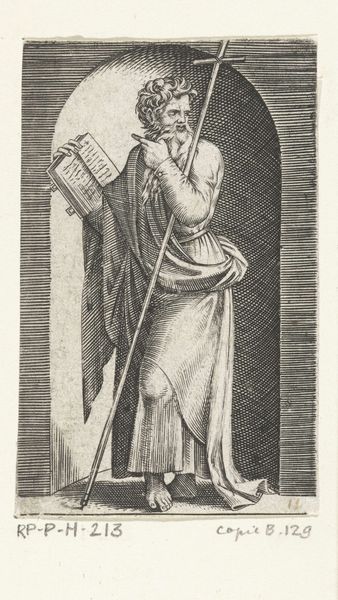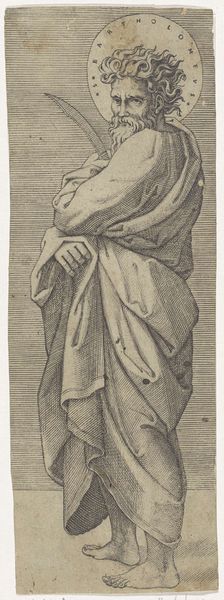
print, engraving
#
portrait
#
pencil drawn
#
baroque
# print
#
figuration
#
history-painting
#
engraving
Dimensions: height 259 mm, width 136 mm
Copyright: Rijks Museum: Open Domain
Curator: Here we have "Heilige Matteüs", or Saint Matthew, an engraving by Petrus Clouwet, dating back to somewhere between 1639 and 1670. Editor: My first impression is of quiet strength. He’s not exactly imposing, but there’s a gravity in his gaze and posture, a weightiness emphasized by the starkness of the engraving. Curator: The halo, of course, is instantly recognizable—it marks Matthew as a holy figure, an apostle. It radiates divinity in this work, contrasting subtly with the grim instrument of his martyrdom he is carrying. Editor: Exactly. The halberd – the axe-like weapon – sits rather jarringly beside the halo. It’s a potent reminder of the violence inflicted upon religious figures. That's history rendered palpable. Who has told his stories? Who was silenced to elevate his voice? Curator: Well, traditionally, the halberd is Matthew’s attribute. An object connected directly with his eventual martyrdom and sacrifice. He is both divine and, shall we say, marked by his end, eternally, through this iconography. It speaks volumes about the expectations surrounding devotion in this era. Editor: But devotion doesn’t exist in a vacuum. The display of the foot feels deliberate, perhaps alluding to humility, the grounding of the divine in the human, the suffering of the earthly body but bare feet are so easily susceptible, too. Is he the suffering servant, or is it commentary about class structures within religious institutions? Curator: Possibly both! Remember, religious iconography aimed to convey layered messages to a broad audience, who were mostly illiterate. Images served as a potent teaching tool. So a symbol is open to many readings. And the Church, and religion's use in colonial violence is worth bearing in mind, too. Editor: Definitely. This piece shows us just how powerfully symbols function to maintain historical narratives, but to me also highlight how they often sanitize histories of violence and martyrdom in favor of veneration. I find the image incredibly stark but layered when the full historical picture is called to the surface. Curator: Agreed, looking closely is a continuous opportunity for new insights to appear. And symbols evolve and shapeshift as cultural memory moves across time.
Comments
No comments
Be the first to comment and join the conversation on the ultimate creative platform.
